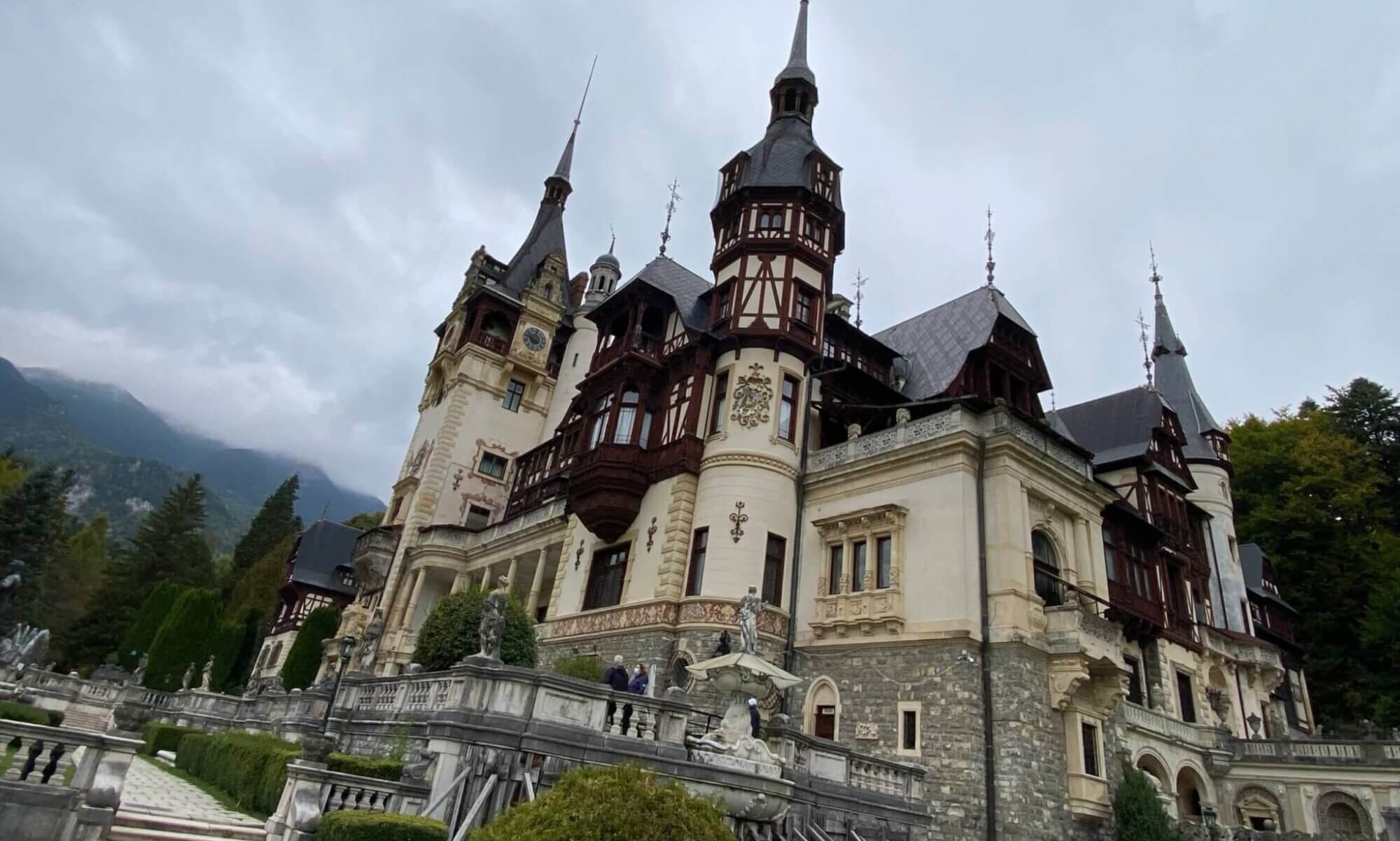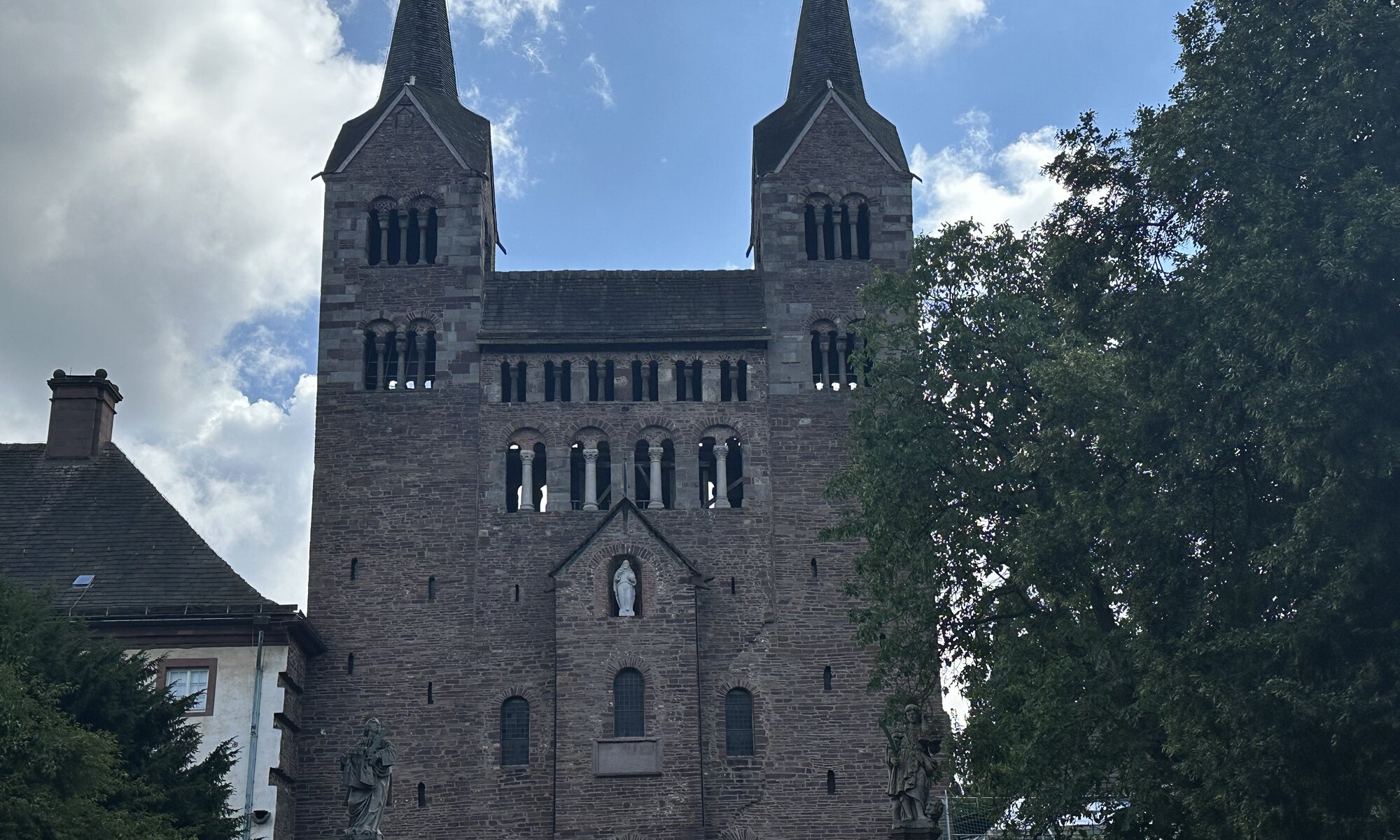When scrolling through the list of UNESCO World Heritage Sites in Germany you’ll discover the Cloister Corvey near the smalltown Höxter in Germanys North Rhine-Westphalia. In fact it is not the entire monastery that is inscribed on the list, it is only one part of its church (the Westwerk) and something invisible today: the city once surrounding it (the Civitas). What’s that all about? Corvey was a Carolingian monastery founded in 822 CE. Charlemagne wanted to drive Christianisation in Saxony after he conquered it.
In the following centuries Corvey developed fast and became not only a spiritual center with its vast library but also a strong economic power in Saxony. Around the monastery a city developed and grew until the citizens of nearby Höxter united with the city of Paderborn and destroyed the Civitas Corvey in 1265. Still today scientists can discover remains of the former city now hidden under acre and fields. The vast library was finally destroyed during the Thirty Years’ War in 1635.
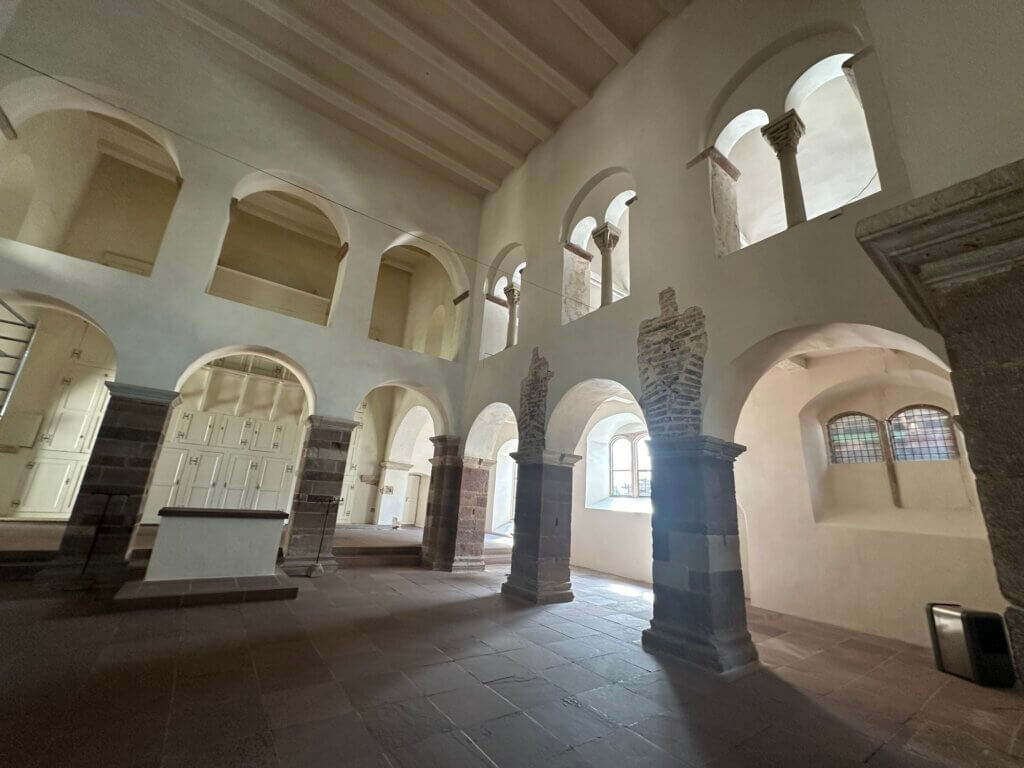
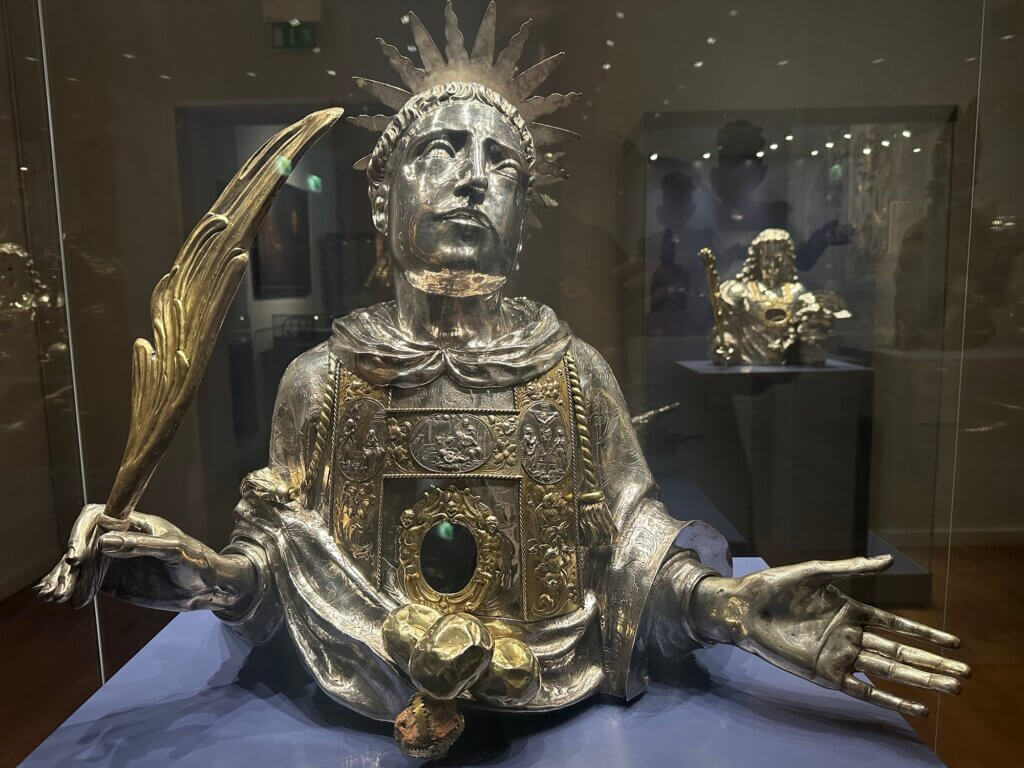
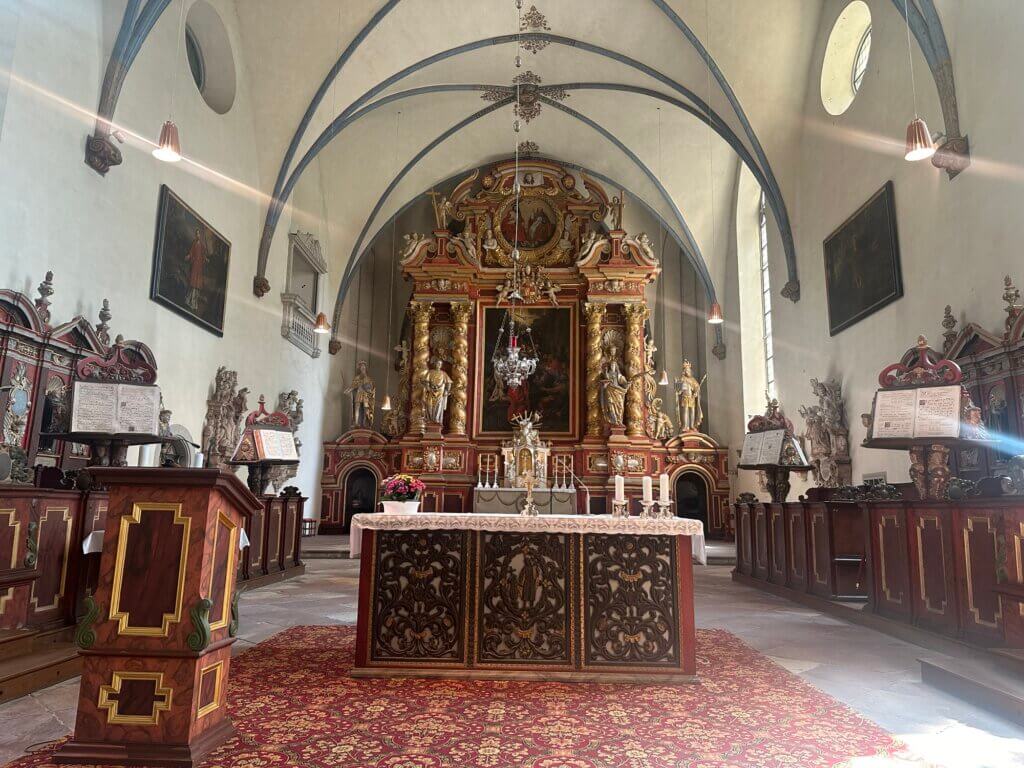
Nevertheless the ensemble of monastery and castle is an impressive building with nice gardens next to river Weser. The only very old part of Corvey is the western facade (Westwerk) of the church St. Stephanus and Vitus (yes, it contains relics of both saints). That is why the Carolingian Westwerk (from 885 CE) is explicitely named by UNESCO. It has two towers, has been built in the style of the Aachener Dom with frescos and columns. The plaque in the middle states in Roman tradition ‘CIVITATEM ISTAM TV CIRCVMDA DNE ET ANGELI TVI CVSTODIANT MVROS EIVS’ – ‘Lord, surround this city and let your angels be guardians of its walls‘.
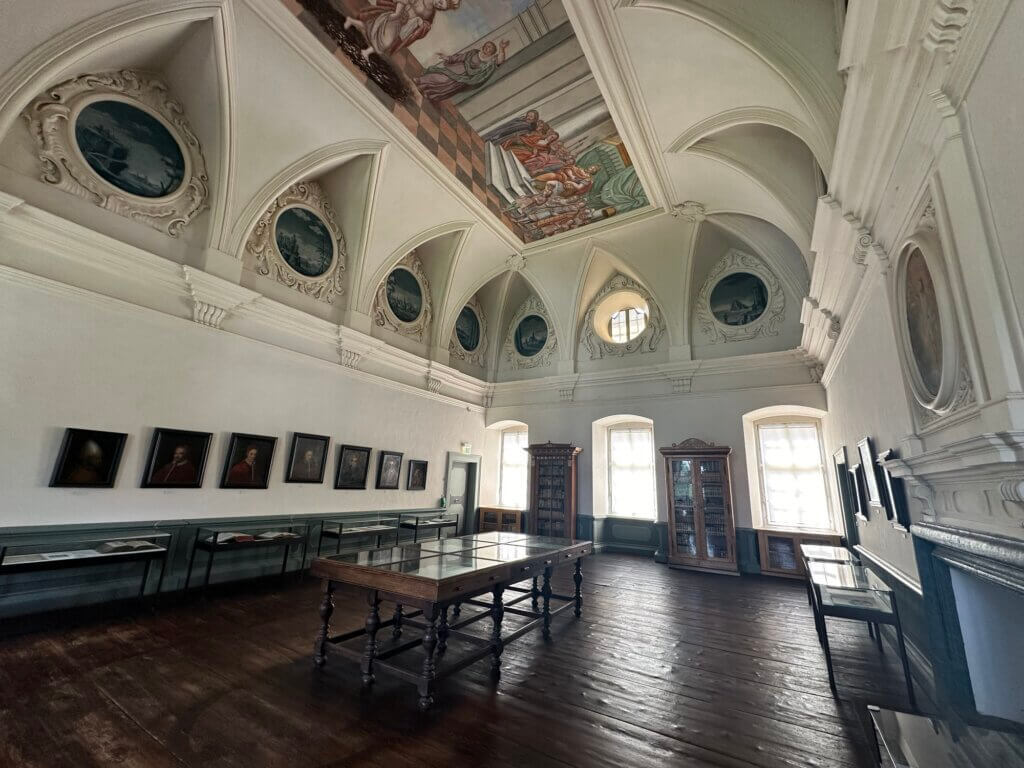
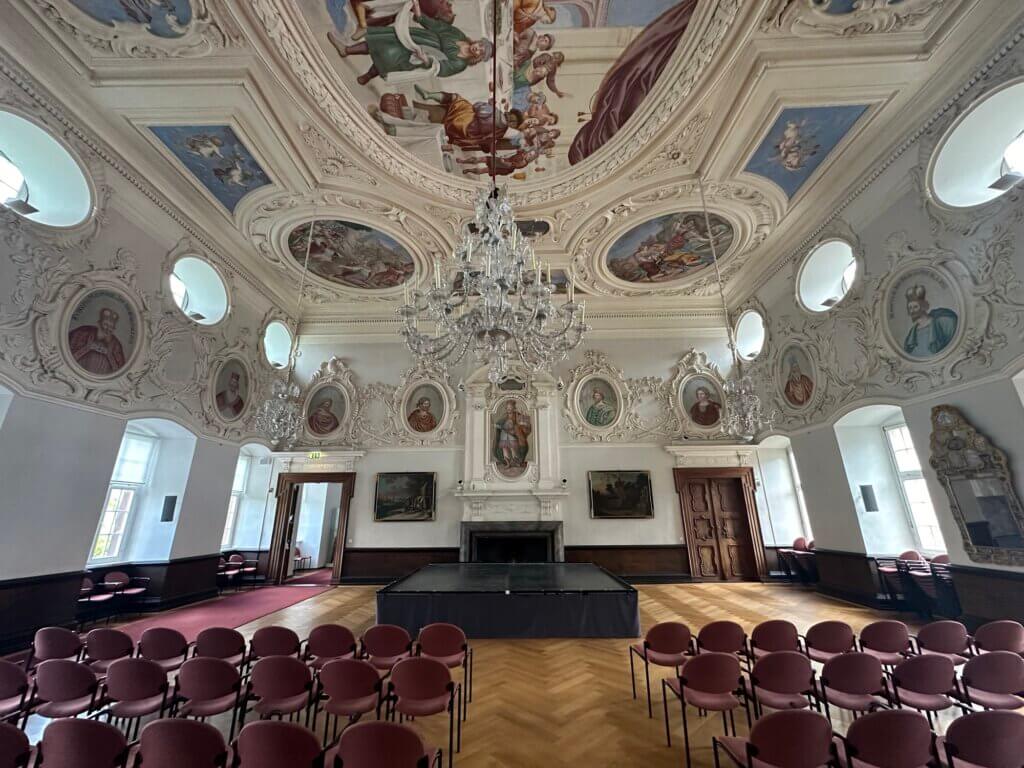
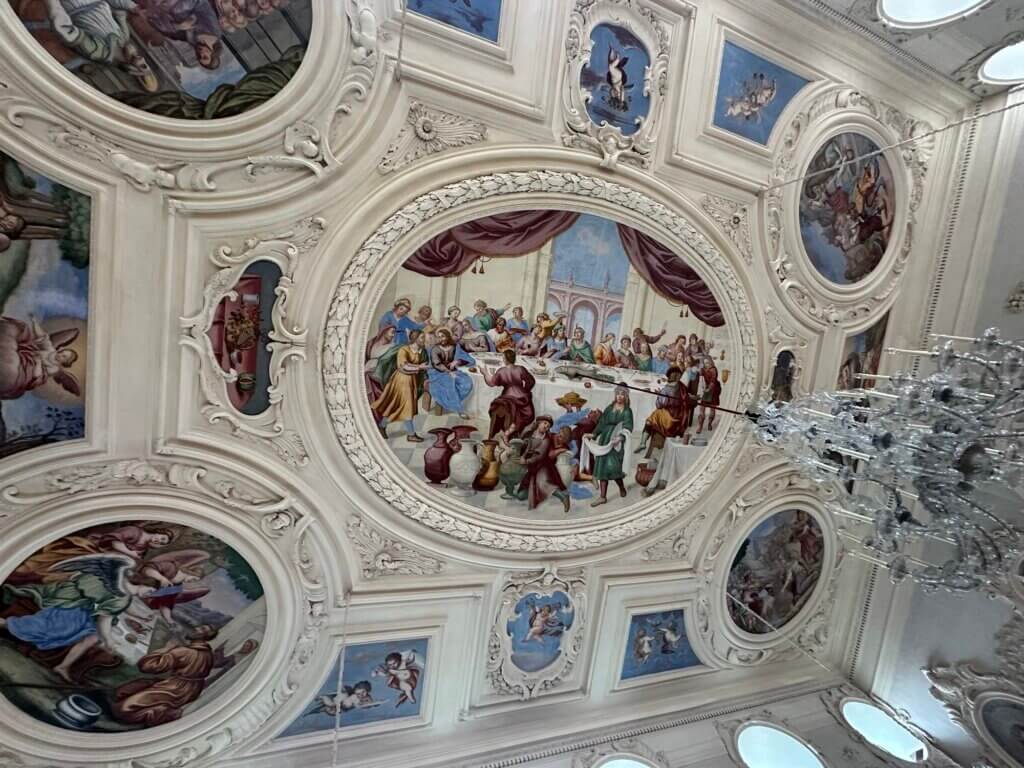
Within St. Stephanus and Vitus you can discover the ancient Kaiserkirche from 885 and the Baroque-style church from the 15th century. Afterwards you can take a tour through the castle and visit the remains of the vast library, the rich decorations and historic rooms. It documents all the history that a building standing and being used for 1,200 years has. That also includes very unexpected side usages like Albert Speer (Hitlers architect) working here on the reconstruction of destroyed German cities. He forgot 800 photos of the models describing the planned World Capital Germania, the insane and gigantomanic plans to remodel Berlin.
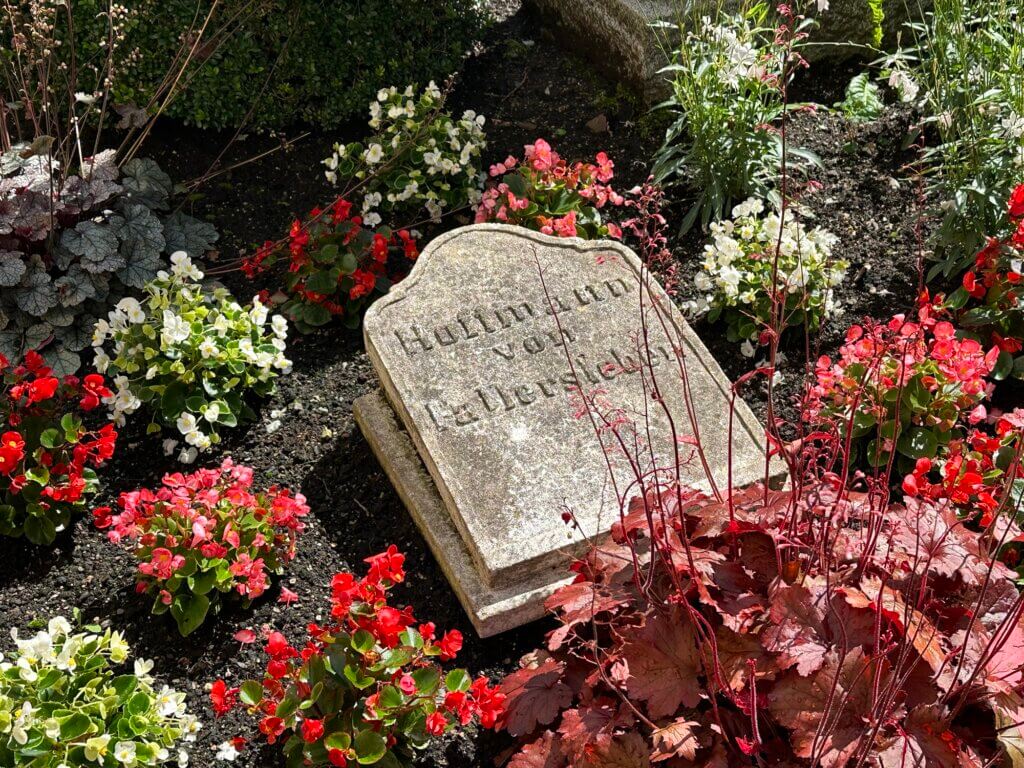
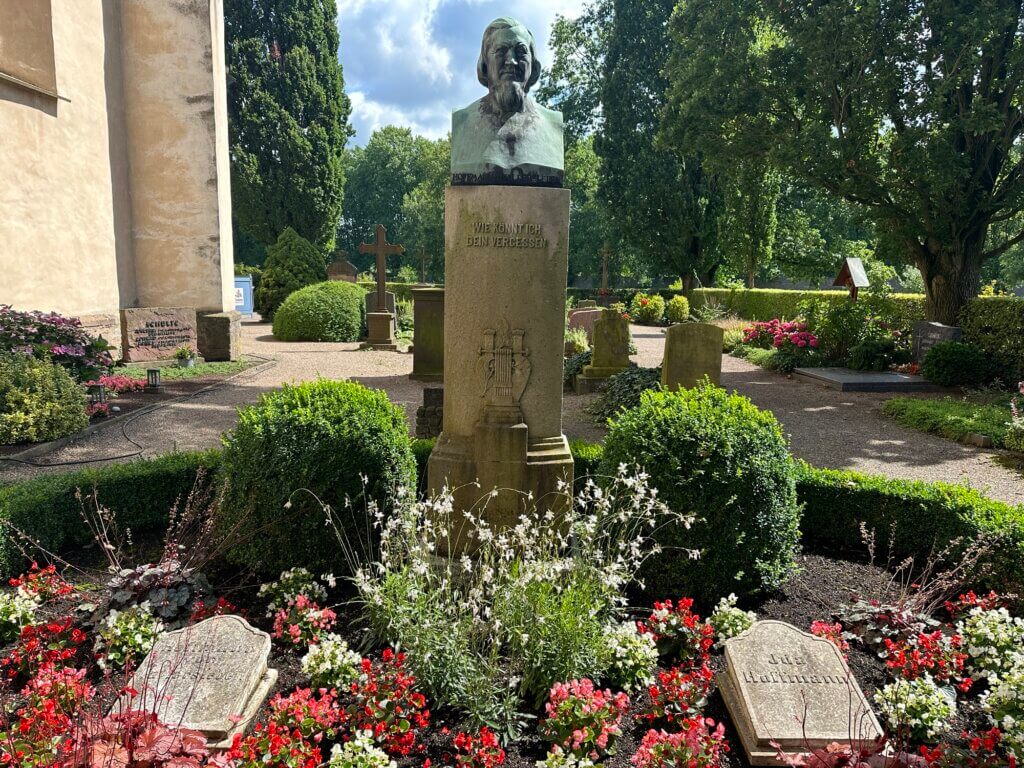
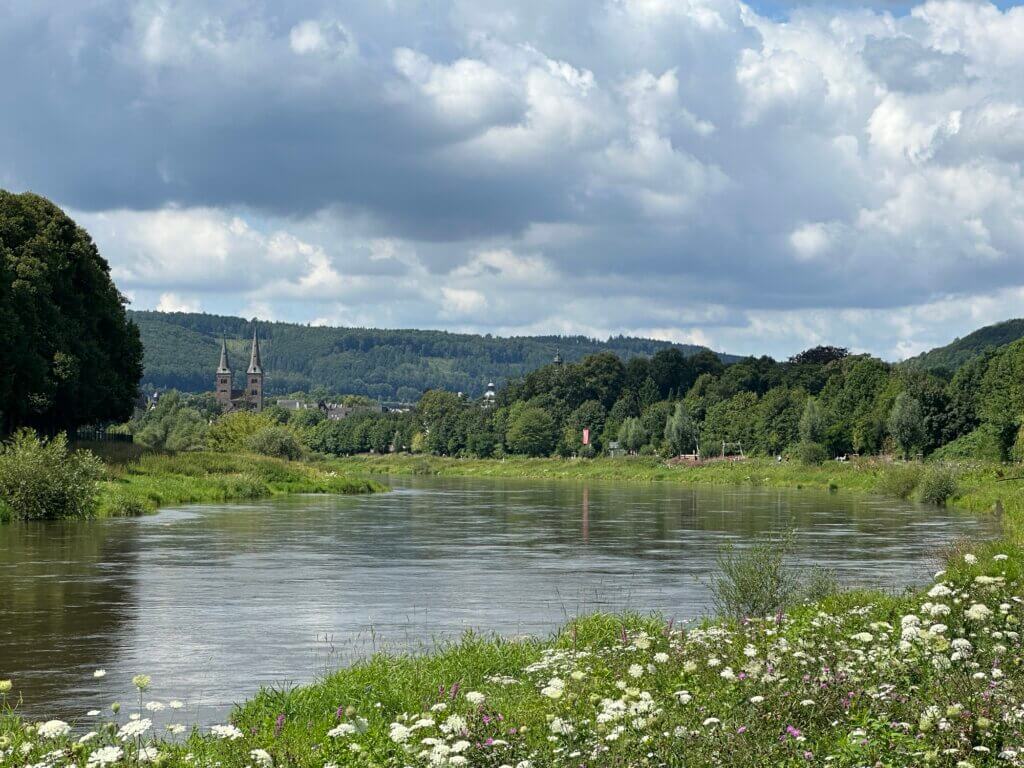
If you walk into the garden you can discover a small graveyard where also a librarian is buried who was rather known as a professor and poet: Hoffmann von Fallersleben. He also wrote the German national anthem (‘Lied der Deutschen‘) which I rather dislike. Getting to Corvey is easy; parking lots are available directly next to the castle. If you’ll want to reach Corvey via public transport you’ll have the joy of a beautiful 2.5 kilometers walk along river Weser: closest railway stop is Höxter-Rathaus. If you’re arriving from Göttingen or Paderborn you need to switch trains at Höxter-Ottbergen to get to Höxter-Rathaus. But honestly: the walk along the Weser was part of the experience visiting Corvey.
Karolingisches Westwerk und Civitas Corvey
UNESCO World Heritage Site
Kloster Corvey / Schloss Corvey
Höxter
Germany
Loading map...

